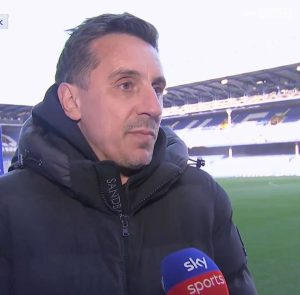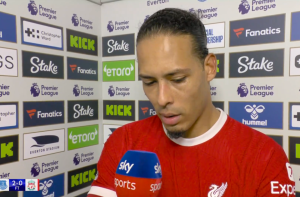Tunisia’s defensive flaws mean they face early exit from World Cup 2022- predicted line up and stats

TUNISIA will be playing in Group D alongside France, Denmark and Australia.
It is definitely going to be a complicated group stage for Tunisia, who will start by facing Denmark and then aim to beat Australia before challenging the World Cup holders, France, in the last group stage match.
Tunisia’s most difficult test in this World Cup will be the way with which they deal with their first match against Denmark.
Playing well in this first game and getting a positive result against a tough Denmark team will change everything in the Tunisian players’ minds and make them very confident to win the second match.
Predicted Starting XI
Tunisia will most likely start the tournament with Aymen Dahman as a goalkeeper as he is favoured in comparison with Bechir Ben Said and Sedki Debchi.
Here’s how Tunisia are expected to line up
read more world cup news
In defence, head coach Jalel Kadri has got some good options to choose from and he will more likely rely on Mohamed Drãger as a right-back and Hamza Mathlouthi as his backup.
Wajdi Kechrida proved to be the second-best option for this role alongside Drãger.
The central defensive duo will most likely include Lorient’s Montassar Talbi and Salernitana’s Dylan Bronn knowing that both of these players have been consistent throughout this first part of the season.
Bilel Ifa and Nader Ghandri have also proven their worth whenever they participated with the national team.
Most read in Football
On the left flank, Ali Maaloul proved during the last few years that he is the best actual left-back in Tunisia.
Moreover, his chemistry with players like Youssef Msakni, Naim Sliti, Wahbi Khazri and others was obvious to everyone and helped Tunisia win numerous games previously.
Therefore, it would be essential to preserve this kind of chemistry and work on improving it.
Despite these offensive abilities, Maaloul can also be less efficient in defence especially against wingers with great pace such as the ones Tunisia will encounter during the group stage.
Jalel Kadri can also try to adapt his team to suit the opponent’s strengths and weaknesses by switching to the 3-4-3 as he did in last year’s Arab Cup.
This formation might be more balanced for the team against teams like Denmark and France.
In terms of attack, Tunisia doesn’t really have plenty of excellent options and will rely on Youssef Msakni’s magic on the left wing.
Attacking phase
The above graphic shows detailed statistics on Tunisia’s attacking style, their weaknesses and strengths. In fact, what we can understand from this pizza plot is that Tunisia pass a lot inside the final third but don’t score a lot of goals despite shooting so often during games.
Therefore, they will have to improve their finishing accuracy in order to exploit the chances they create and more importantly, it would be important to try shooting more often on goal instead of passing the ball passively.
On the counter, Tunisia push numbers forward
Moreover, working on the offensive duels would help Tunisia a lot during this World Cup in order to have more possession in their opponent’s half.
The team should focus more on intercepting the ball in their opponent’s half by applying pressure intelligently and efficiently.
Tunisia can be excellent on the counter especially when their players are 100 per cent focused.
In the following picture, Jebali had a counterattacking opportunity in the last minutes of the match and had two teammates asking for the ball as you can see.
Jebali exploits the use of runners either side by shooting for goal
These two players offered great passing options but at the same time made defenders hesitate.
Jebali exploited this situation in the best possible way by showing that he intends to pass while shooting the ball with great power towards the top left angle to score a beautiful goal.
Defensive phase
When it comes to defending, Tunisia proved during the Arab Cup and the AFCON that they are solid in defence and that they are improving a lot from this aspect.
The team make a lot of interceptions per match but they still do not win a lot of defensive duels. They need to improve their statistics in this regard in order to be more efficient in defence.
Moreover, the team plays a lot in the air despite not winning a lot of the aerial duels per match.
And at the same time, Tunisia concede numerous shots per game, which can be very dangerous for them especially knowing that they will face teams with great shooting accuracy.
The Tunisian defence will have to be very careful when it comes to passes played at the back of this defensive line.
Since their opponents will certainly include numerous technical midfield players, Tunisia’s defence will have to be attentive to possible penetrations throughout the 90 minutes to not let something like what happened against Brazil occur again.
In the following picture, we can see how Barcelona‘s Raphinha was penetrating through the back of Talbi while Ben Ouanes didn’t try to cover for his teammate.
Defensively, Tunisia have a tendency to switch off
Both players should have defended better in this situation and more importantly, they had to react in a more effective way as soon as Chelsea‘s Thiago Silva crossed the ball.
Such errors might lead to conceding goals, especially against France and Denmark and therefore, Tunisia should be alert to similar actions.
In addition, Tunisia will have to avoid conceding too much space to skilful attacking players inside the final third as such players are usually going to create danger if not score goals, like what Raphinha did in the next picture when Tunisia left too much space for him on the right-wing.
Clever attacking players can exploit Tunisia’s weak defence
Tunisia will face tough attackers in Group D, like in this friendly against Brazil.
Transitions
Tunisia’s offensive transitions are usually quick and quite direct. They rely on one of Skhiri or Laïdouni to start the first pass and then the ball always gets to Msakni or Sliti who are very good dribblers and can advance well with the ball.
In the next example, Msakni is advancing with the ball and looks at the striker to see if there is a passing possibility.
Quick, direct attacking transitions often to Msakni kickstart Tunisia’s attacks
The Tunisians can also opt for direct passes towards the strikers whenever they detect the adequate opportunity to do so.
Direct passes from the flanks are angled towards the forward
Attackers
As mentioned earlier, Tunisia have various options in attack and will mainly rely on Khazri, Jaziri, Khenissi and Jebali.
Although these players are all 29 or older, all of them are still delivering some solid performances with their respective clubs and are capable of helping their national team by scoring goals during this tournament, knowing that they have the experience needed to help the team.
Khazri, for instance, has already scored in the previous World Cup against Belgium and Panama and we can expect to see goals from him.
The same applies to Jaziri who has been excellent during the past few seasons with Al Zamalek and will represent a great weapon for Jalel Kadri knowing that he has some great finishing skills and pace.
Midfielders
We have already explained that this might be the team’s best area as the players existing in this part of the field are excellent and will be fundamental for the team both from a defensive and an attacking perspective.
Players like Skhiri, Laïdouni, Chaalali, Sassi and probably Ben Romdhane will have a key role during the tournament and will be responsible for dictating how the team will play.
Also, they will have a very delicate mission which is protecting the defensive line and covering when necessary, according to the head coach’s instructions.
Defenders
This might be the most delicate and fundamental section of the team as it is the part that will suffer the most and endure a lot during the group stage, given the quality of the opponent’s attack.
Tunisia, indeed, have some excellent names in defence.
Nevertheless, it will not be sufficient to be excellent on an individual level.
It is going to be necessary to defend as a unit and have a very organised defensive line in order to avoid mistakes and limit the attacking threats. Otherwise, Tunisia would be in trouble.
Key Player
Tunisia’s key player in this tournament is Youssef Msakni.
The Al Arabi 31-year-old international will be the team’s leader in this competition as he is the most skilful player in the team and the most experienced player to boot.
Msakni plays in most attacking positions and doesn’t have problems with adapting to different formations or positions.
He plays mainly in all final third positions and can also play as a false nine. But most of all, he excels when playing as an advanced playmaker or as a left winger.
Read More on The Sun
Tournament prediction
Tunisia will face a tough group with two clear favourites to qualify to the Round of 16: France and Denmark.
The team of Tunisia is also considered almost as good as the Australian one, which makes Group D a big challenge to the African team.






